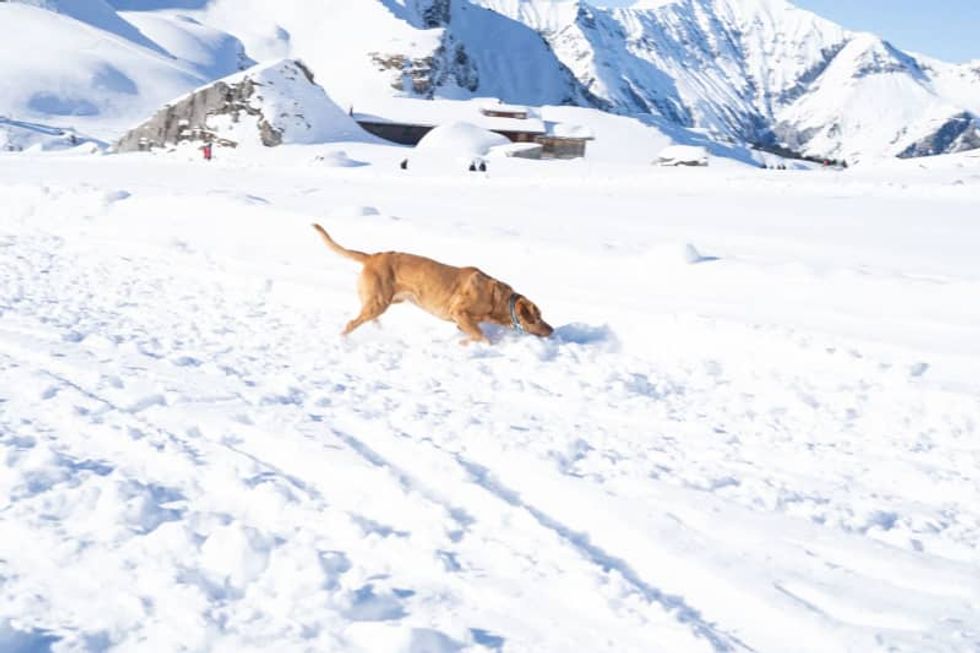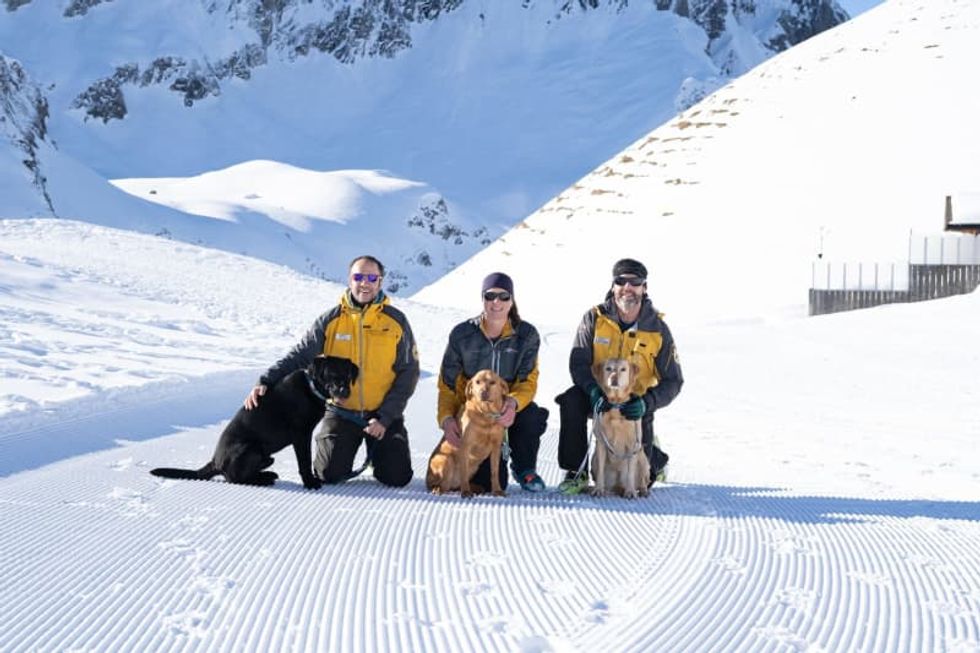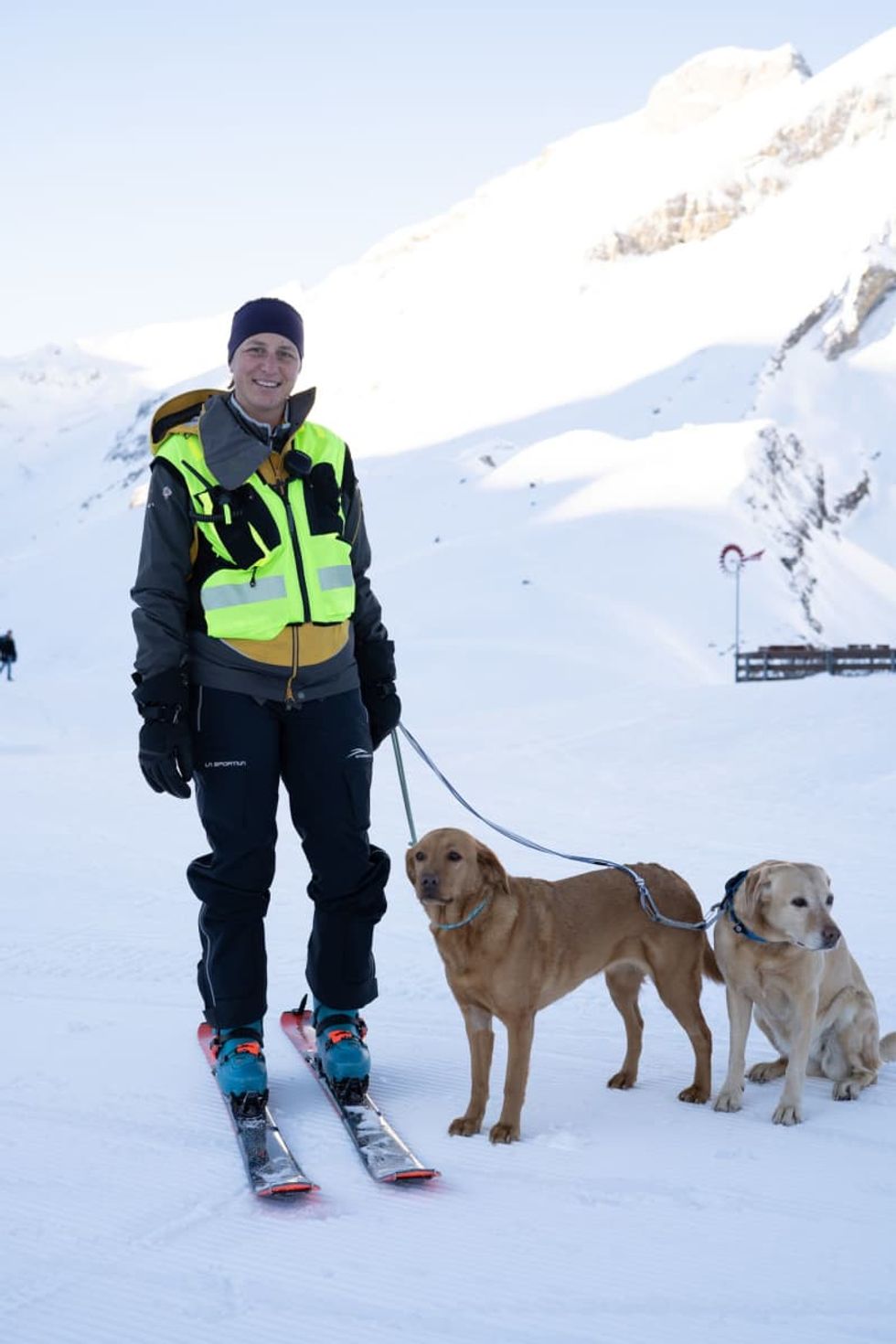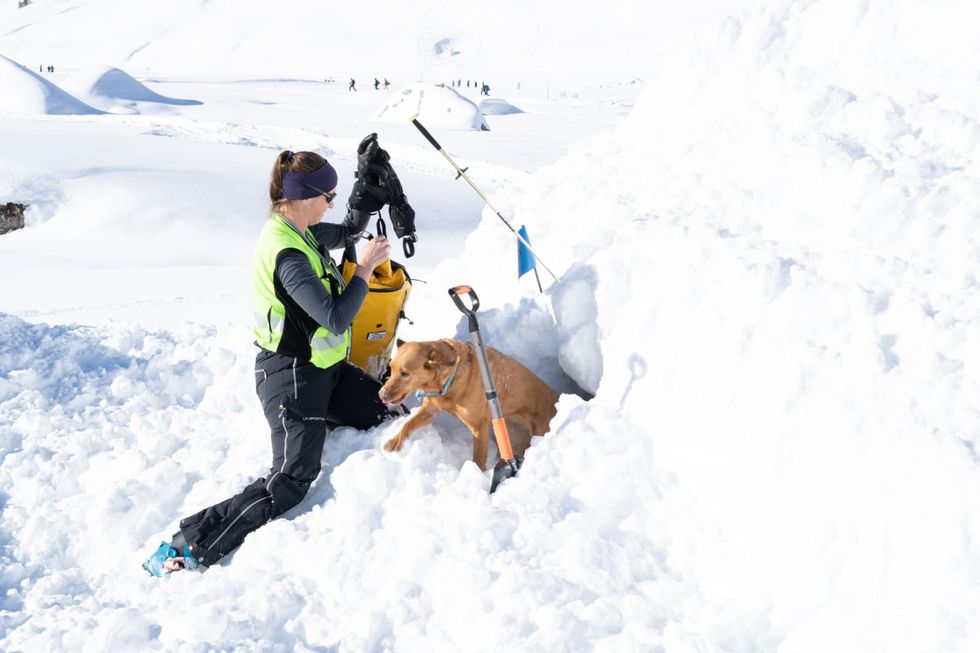
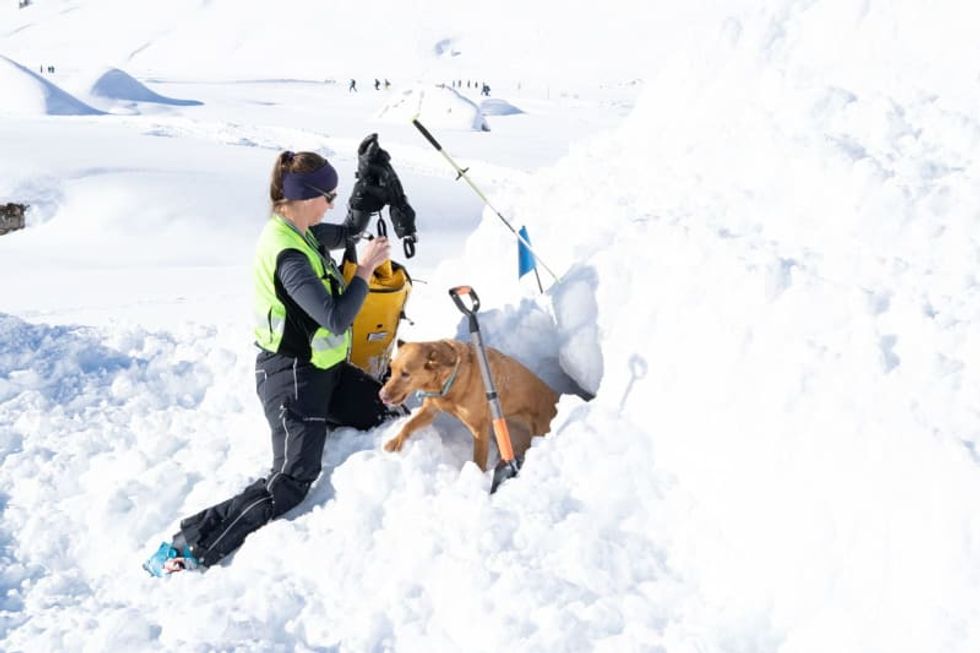
Dog Woya sits quietly next to handler Karin Schmid, waiting for the next assignment.
"There's been an avalanche. Two people are missing," says Schmid, who runs a training course for avalanche rescue dogs in Switzerland.
The avalanche she is referring to is just an exercise in a programme to teach the canine team how to find people buried in snow.
People die almost every year in avalanches and the Swiss Alpine Rescue is constantly on standby for emergencies.
Dogs play a key role in wilderness tracking during natural disasters and other events where people have been declared missing, able to locate those who are lost many times faster than humans, thanks to their powerful sense of smell.
But first they need to learn how to locate mountaineers, skiers or snowboarders, track down their equipment and dig out their packs.
The Swiss dogs are trained at a ski resort while people ski and sled about, and only occasionally glance over at the canine students.
Hope, Zip, Eiwy, Lasko, Ria and Aru sit focused, waiting their turn. Some already work as avalanche rescue dogs, while others are still in training.
It's Woya's fifth winter working on the avalanche rescue crew with Schmid and they have the routine down pat. Schmid gives the commands, and Woya dashes off.
They walk up and down, systematically covering the whole snowy space by pacing back and forth. "It is very important that we proceed calmly and deliberately," says Schmid.
Once Woya reaches a larger mound of snow, she starts digging.
She checks to see if Schmid is watching, then keeps on scraping away. Finally, she uncovers another dog handler, hiding as part of the training.
"Karin and Woya did very well," is the assessment. Woya gets a treat, while the next team takes a turn.
The dogs undergo four stages of exercise to hone their skills at finding people.
Initially, they seek out the dog handler who's hidden in a mound of snow, but with the entrance left open so the dog can see where to run.
That entry way to the mound is closed in the second stage of difficulty, with only a small air hole left open. The dog digs their way to find the person who's pretending to be lost.
In the third level, the dog handler and someone else hide in the hill, with the stranger lying in front of the handler so the dog finds the stranger first.
Lastly, only a stranger is hidden in the snow, while the handler sends off the rescue dog to find the person, and gives other commands.
It takes three years to train a rescue team, but even after that time, they keep practising so they're always prepared in case of an accident where someone's life is in danger.
"Not all dog are suitable," says Schmid. Rescue dogs have to listen closely to their human handlers. They also need to be able to wait patiently. And they need to be able to be flown around in a helicopter.
"And of course they have to want to search in the snow. For the dogs, it's mainly a game. They do it because we reward them with treats afterwards."
Once trained up and ready to go, the human-canine team helps rescue crews seek out those lost in accidents. They have to move fast, in such cases. "We need to be ready within 10 minutes so that the helicopter can pick us up," Schmid says.
For many people, the image of a St. Bernard comes to mind when thinking of an Alpine rescue dog. That image is partly because of Barry, a St. Bernard who became famous for having helped many people in the Swiss mountains. Barry lived more than 200 years ago and is now to be found in the Swiss Natural History Museum in Bern.
The Swiss Alpine Rescue team doesn't have any St. Bernards among its trainees. "They are much too big to work as rescue dogs," says Schmid. A rescue dog ideally weighs between 15 and 45 kilograms. If they are too heavy, they sink in the snow, according to Schmid. Furthermore, the canine handlers have to be able to carry the dogs, if they're going to take a helicopter, for example.
On the flipside, dogs that are too small won't be able to make sufficient progress in deep snow, Schmid says.
